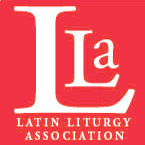Frequently Asked Questions |
|
Q. Is the Tridentine Mass another name for the Latin Mass? |
|
A. Not exactly. The Tridentine Mass is so called because it resulted from the Council of Trent, a town in northern Italy, whose name in Latin is Tridentum. The Council lasted, on and off, from 1545 to 1563. In its 22nd session (September 1562) the doctrine of the Mass was defined, as were things to be observed or avoided in its celebration. By a decree of the Council, the actual codification of the Mass was left to the Pope, then Pius IV. His successor, Pius V, supervised the work. The 'Tridentine Missal' of 1570 was the result. This Roman Missal was just that, the Mass as celebrated at Rome and many other places, and had been so celebrated for centuries. Indeed, the Canon of the Mass had remained unchanged since Pope St. Gregory the Great (540-604). The Missal was a response to the Protestant Reformation - it answered the question - "What is a legitimate Catholic Mass?" - a question not relevant before the Reformation. There were other rites in the Latin church besides the rite as celebrated at Rome. Milan, Italy, and Toledo, Spain, for instance had their own way of celebrating the Mass. The Dominicans had their rite of Mass, too. When Pius V issued the Missal, he respected any rite of Mass that had been extant for at least 200 years, permitting them to be celebrated instead of the Roman Missal. In 1970, Pope Paul VI replaced the Roman Missal with something called the Novus Ordo Missae and forbade the celebration of the "Old Mass" except in very limited circumstances such as elderly priests who did not want to learn the "New Mass" at a late stage in life. Nowadays, when we talk about the 'Traditional Latin Mass', we mean Mass according to the Roman Missal of 1962, a direct descendant of the Mass of Pius V, which is always celebrated in Latin. The Mass of Paul VI may be celebrated in Latin, but is far more likely to be celebrated in the vernacular. |
|
Q. What do the terms "Extraordinary Form" and "Ordinary Form" mean? |
|
A. Pope Benedict XVI coined these terms to distinguish the Mass of Paul VI (Novus Ordo) from the Traditional Latin Mass (Mass of Pius V, Tridentine Mass), saying that they represented two "forms" of the Mass of the Latin Rite of the Church. |
|
Q. Since the Second Vatican Council (1962-65) the use of the vernacular has become very widespread in the liturgy of the Catholic Church. Given this, why should it be important to retain a place for Latin in the liturgy of today? |
|
A. Latin had been the language in use throughout the Western Church almost since its foundation (in the very early days it was in Greek). Latin has been used in the rites of the Western Church since at least the fourth century, if not earlier. There are many reasons why Latin should still play an important part in the liturgy of today's Church. Vatican II itself envisaged the continued use of Latin: "The use of Latin is to be preserved in the Latin rites." (Constitution on the Sacred Liturgy, 36) It is not surprising therefore that the Novus Ordo introduced by Pope Paul VI in 1970 was composed in Latin. Vernacular translations followed, rather than preceded, the Latin original. The use of the Church's traditional language of worship has the following important benefits:
|
|
Q. How does the Traditional Latin Mass differ from the Mass of Paul VI? |
|
A. There are many differences between the Mass of Paul VI
(Ordinary Form) and the Traditional Latin Mass (Extraordinary Form).
Some of these are obvious and others more subtle.
For a very brief explanation of some (10) of the more obvious differences
likely to be observed by someone new to the Traditional Latin Mass, see the
following link:
|
|
Q. How does the Latin Liturgy Association differ from other organizations that promote the Latin Mass, such as Una Voce, The Latin Mass Society, etc? |
|
A. The Latin Liturgy Association is the only organization in the United States which seeks to foster greater use of Latin in the Novus Ordo Missae (Vatican II) and, at the same time, promotes the expanded use of the Traditional (Tridentine) Latin Mass. Our organization also believes that it is important for us to work from within the Church to help the Church maintain its Latin liturgical tradition and its patrimony of sacred music. We are proud to have several bishops on our Board of Episcopal Advisors and are especially proud that Pope St. John Paul II saw fit to grant us his papal blessing on the work of our Association! We publish a quarterly Newsletter of current developments in the Latin Mass movement, and assist people throughout the USA in their efforts to have more Latin Masses celebrated in their dioceses. |

|
Contact Us |